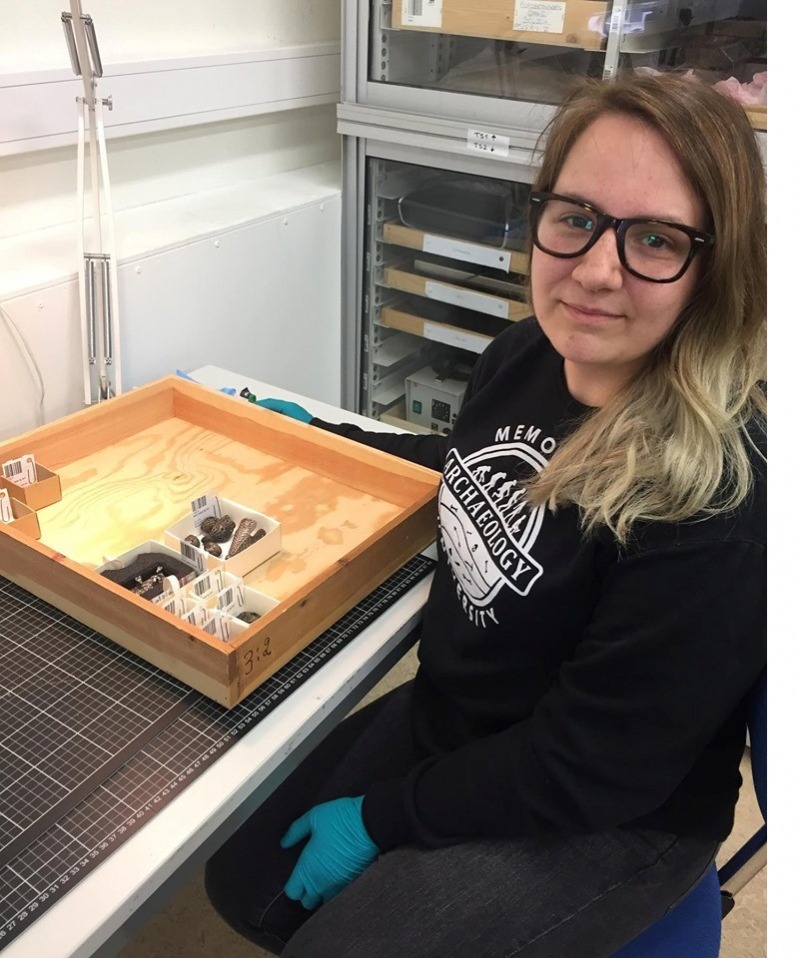Graduate Student Research Diary: Elsa Simms studies Viking-Age material culture from Birka

History MA candidate Elsa Simms traveled to Sweden in the summer of 2019 to examine artefacts from the Viking Age. She describes her discoveries.
“I travelled to Stockholm, Sweden to examine artefacts from Viking Age burial contexts that contained Byzantine and Islamic grave goods. Many of the artefacts were brought to Scandinavia in the early Middle Ages through rivers in modern-day Russia by a group of Viking-Age people called the Rus’. I conducted my research on several burial contexts from a maritime Viking-Age town called Birka, a two-hour boat ride outside of Stockholm. The artefacts are in storage at the Historiska Museet (Swedish History Museum) in Stockholm. I contacted the curators from the museum in the fall and planned my trip behind the scenes to examine and photograph the artefacts myself. This was made possible by the Scholarship in the Arts research funding and allowed me the opportunity to conduct an in-depth and hands-on case study on Birka.
Much of the trip was spent in the museum photographing and cataloging the artefacts. I looked at a variety of jewellery, weapons, and textiles to determine the meaning behind Byzantine and Islamic objects in the selected burials. Byzantine, Islamic, and Russian styles occurred in all of these burials in a variety of ways. From these artefacts, we can tell that the town of Birka had a distinct and diverse maritime identity that differed from many other Viking-Age cultures. Birka was likely a large trading centre. With its placement tucked away safely in Lake Mälaren and close to the Baltic Sea, it was easily accessed by Viking-Age travellers coming from Russia, where much of the Islamic and Byzantine goods were coming from.
Along with the research I conducted at the museum, I went to Birka to see the burials in their landscape. Birka has over 2000 burials, of which barely half have been excavated. Today, Björkö Island – where Birka is located – is home to about 20 people who own farms. I spent a day on the island taking photos and field notes on the locations of burials and the landscape. In doing so, I truly got a feel for this place that I have been reading about for years.”
Elsa Simms, MA candidate, Department of History